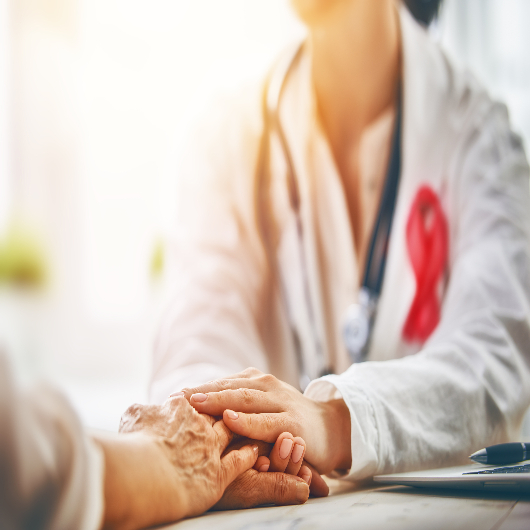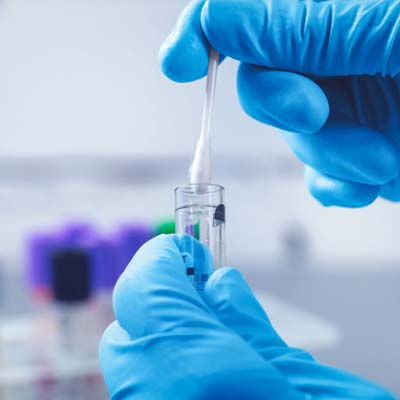Know the Early Signs of Metastatic Breast Cancer

September 26, 2022
Today, breast cancer is often discovered early thanks to screening mammography. This development has reduced the incidence of metastatic breast cancer, which is when cancer spreads to other parts of the body beyond the lymph nodes.
Only 6 percent of women and 9 percent of men with metastatic breast cancer are found to have it at the time of their initial breast cancer diagnosis. The majority of metastatic breast cancers begin within the first five years after a person has completed treatment for breast cancer, although it can return at any time.
While metastatic breast cancer is considered incurable, early treatment can shrink tumors or slow their growth, improve symptoms and help people live longer.
This means that for breast cancer survivors—especially those with triple-negative or HER-2 positive cases—it is vital to be aware of the early signs that cancer has returned in other areas of the body.
Symptoms to Look for
“The most common places for metastasis are in the bones, liver, lungs and brain,” says Catherine Campo, D.O., medical director of breast surgery at Bayshore Medical Center and breast surgeon at Riverview Medical Center. “But it’s very unpredictable. Every case is different.”
Dr. Campo stresses the importance of talking to your primary doctor or breast doctor right away about any new symptoms that may indicate metastasis somewhere in the body, such as:
- Bones: Hip or back pain, broken bones, high blood calcium levels, numb or weak limbs
- Lungs: Shortness of breath, fatigue
- Liver: Belly pain or swelling, appetite loss, yellow skin or eyes
- Brain: Confusion, headaches, dizziness, sleepiness, seizures, vision changes
How to Prevent Metastasis
To reduce the risk of metastatic breast cancer after treatment for breast cancer, follow your doctors’ advice on lifestyle changes (such as getting exercise, controlling your weight and limiting alcohol), long-term treatment (such as immunotherapy or hormone therapy), and follow-up visits and screenings.
“We have a pretty aggressive follow-up for all people who had breast cancer to ensure that we catch any recurrence early on,” Dr. Campo says. “We recommend mammograms every 6–12 months after a lumpectomy, and patients see one of their oncology doctors every three months for the first five years.”
Another way to reduce the risk of metastatic breast cancer is with regular mammograms, even if you have no history of cancer.
“It’s important for people to get screening mammograms because the earlier breast cancer is caught and treated, the lower the risk of recurrence,” says Harriet Borofsky, M.D., medical director of breast imaging at Bayshore and Riverview. “We follow the American Society of Breast Surgeons’ recommendations, which state that annual mammograms should start at age 40 for women at average risk, and earlier for women with elevated risk, for example, due to family history or genetic mutation."
Dr. Campo adds: “Pay attention to your body. Continue with the follow-ups your doctor recommends. If you have any changes, such as a new lump, change in the look or feel of breast skin, or a change in the size or shape of your breast, see your doctor right away to start a workup.”
Next Steps & Resources:
- Meet our sources: Catherine Campo, D.O., and Harriet Borofsky, M.D. To make an appointment with a breast specialist near you, call 800-822-8905 or visit our website.
- Schedule a mammogram near you today
The material provided through HealthU is intended to be used as general information only and should not replace the advice of your physician. Always consult your physician for individual care.
Find a doctor near me

Which Breast Cancer Screening Technology is Right For You?
Breast cancer is more treatable than ever, but misconceptions can lead women to delay testing necessary to catch it in its earliest phases.

Breast Cancer Questions Everyone Should Ask
Every two minutes, a woman in the United States is diagnosed with breast cancer.
Find a doctor near me

Can Men Get Breast Cancer?
Learn about male breast cancer. Dr. Borofsky explains symptoms, risk factors, and treatment options. Call 800-822-8905 to schedule an appointment.

Can Lipstick Cause Breast Cancer?
Can Lipstick Cause Breast Cancer? Learn about potential risks from parabens and phthalates in cosmetics. Reduce your risk with expert advice from Drs. Armour, Borofsky, and Graham. Call 800-822-8905.

Ultrasound Vs. Mammography
Your doctor may order a breast ultrasound instead of a mammography. What's the difference?

Should You Get Genetic Testing for Breast Cancer?
Genetic Testing for Breast Cancer: Learn about your risk and proactive steps to take. Reduce breast cancer risk with early detection.
